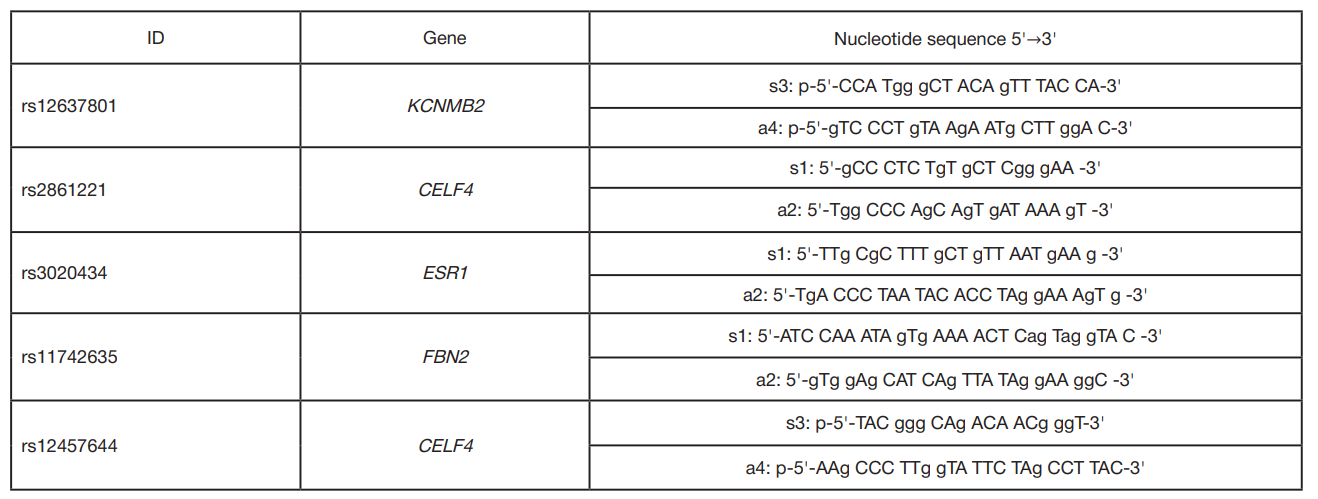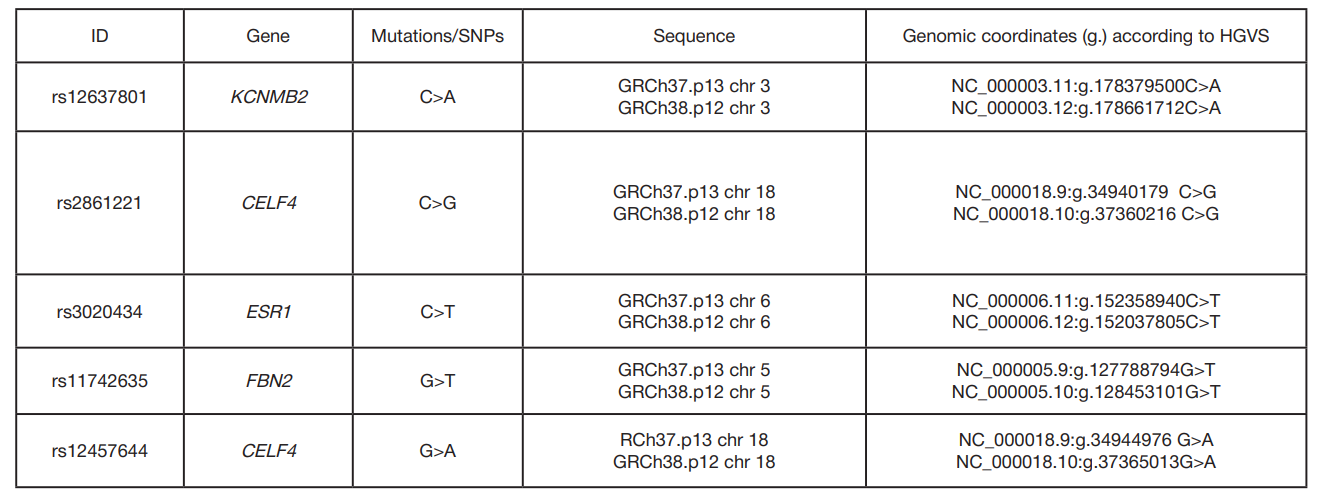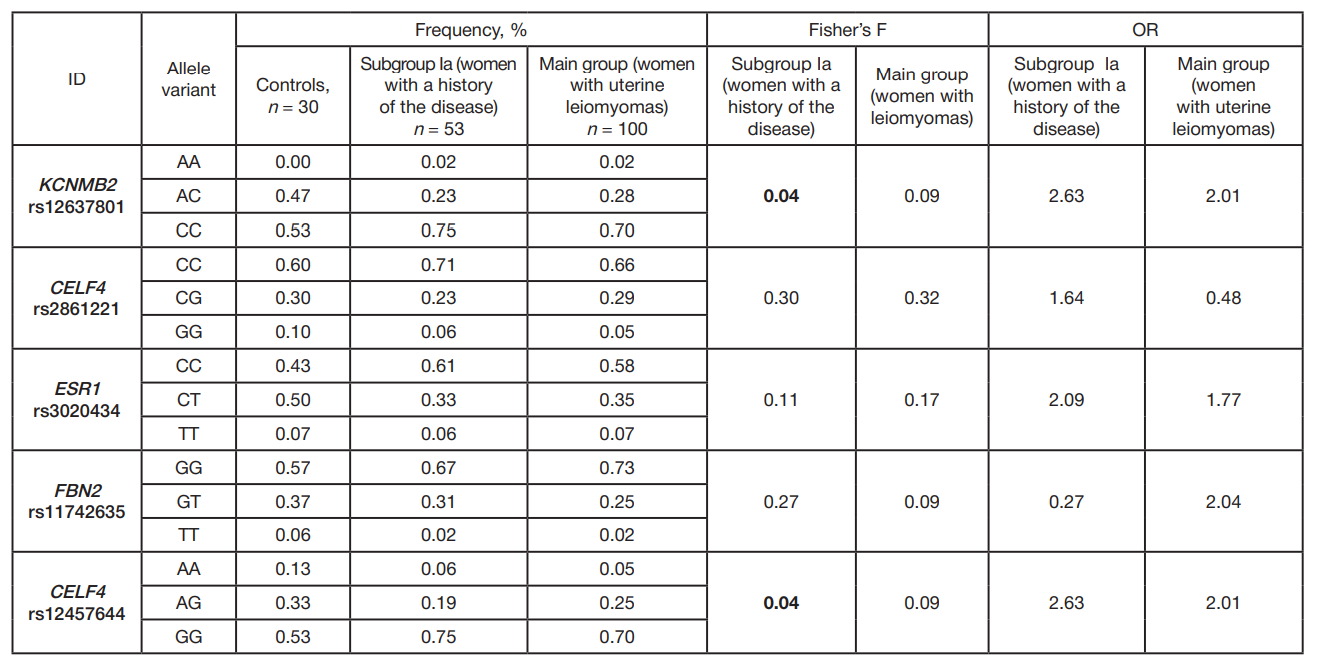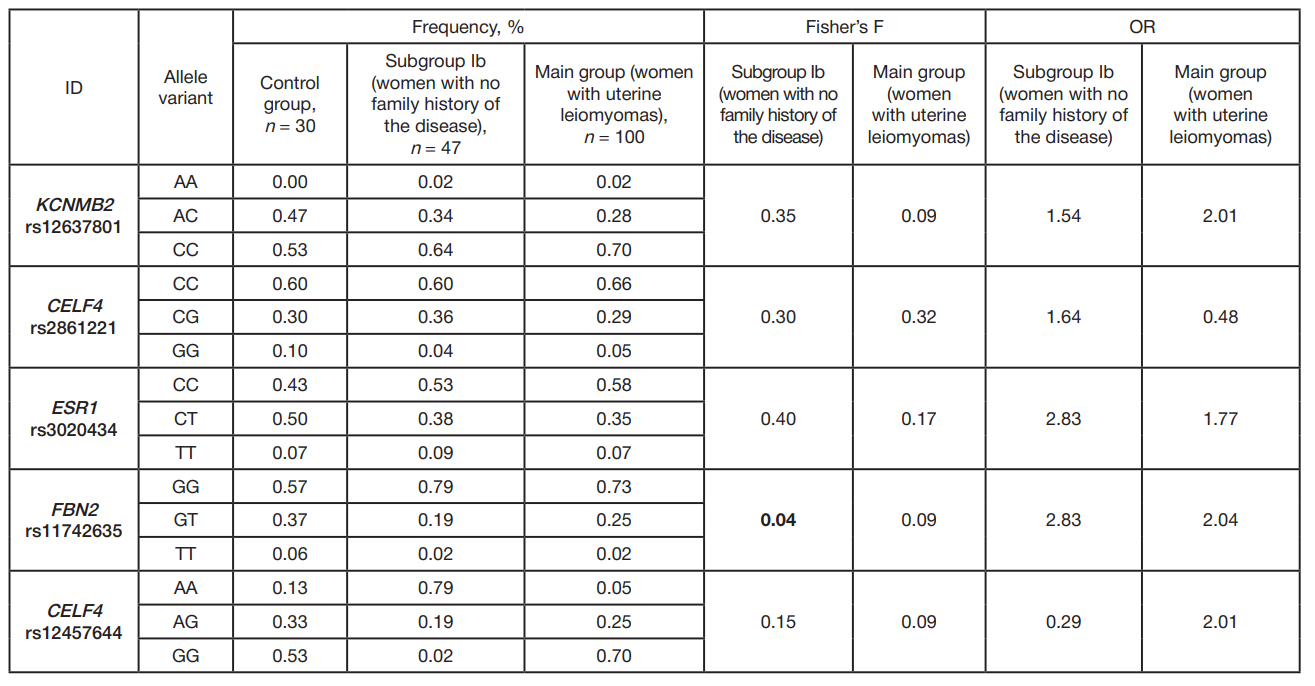
This article is an open access article distributed under the terms and conditions of the Creative Commons Attribution license (CC BY).
ORIGINAL RESEARCH
Hereditary risk factors for uterine leiomyoma: a search for marker SNPs
1 Kulakov National Medical Research Center for Obstetrics, Gynecology and Perinatology, Moscow, Russia
2 Valuyki Central Hospital, Valuyki, Russia
Correspondence should be addressed: Ksenia A. Svirepova
Akademika Oparina, 4, Moscow, 117997; ur.xednay@iwsesk
Funding: this study was part of the State Assignment (2019) on the Improved management of patients with benign reproductive system neoplasms with hi-tech diagnostic imaging techniques and molecular panels for predicting the progression and relapse of the disease.
Compliance with ethical standards: the study was approved by the Ethics Committee of Kulakov National Medical Research Center for Obstetrics, Gynecology and Perinatology. Informed consent was obtained from all participants.
Author contribution: Svirepova KA analyzed the literature, carried out the research and wrote the manuscript with input from all authors; Kuznetsova MV carried out the research and wrote the manuscript with input from all authors; Sogoyan NS collected tissue samples and documented them in the biobank’s register; Zelensky DV collected tissue samples for research; Lolomadze EA, Mikhailovskaya GV helped with the laboratory part of the research; Mishina ND performed statistical analysis; Donnikov AE, Trofimov DYu supervised the study and revised the manuscript.




